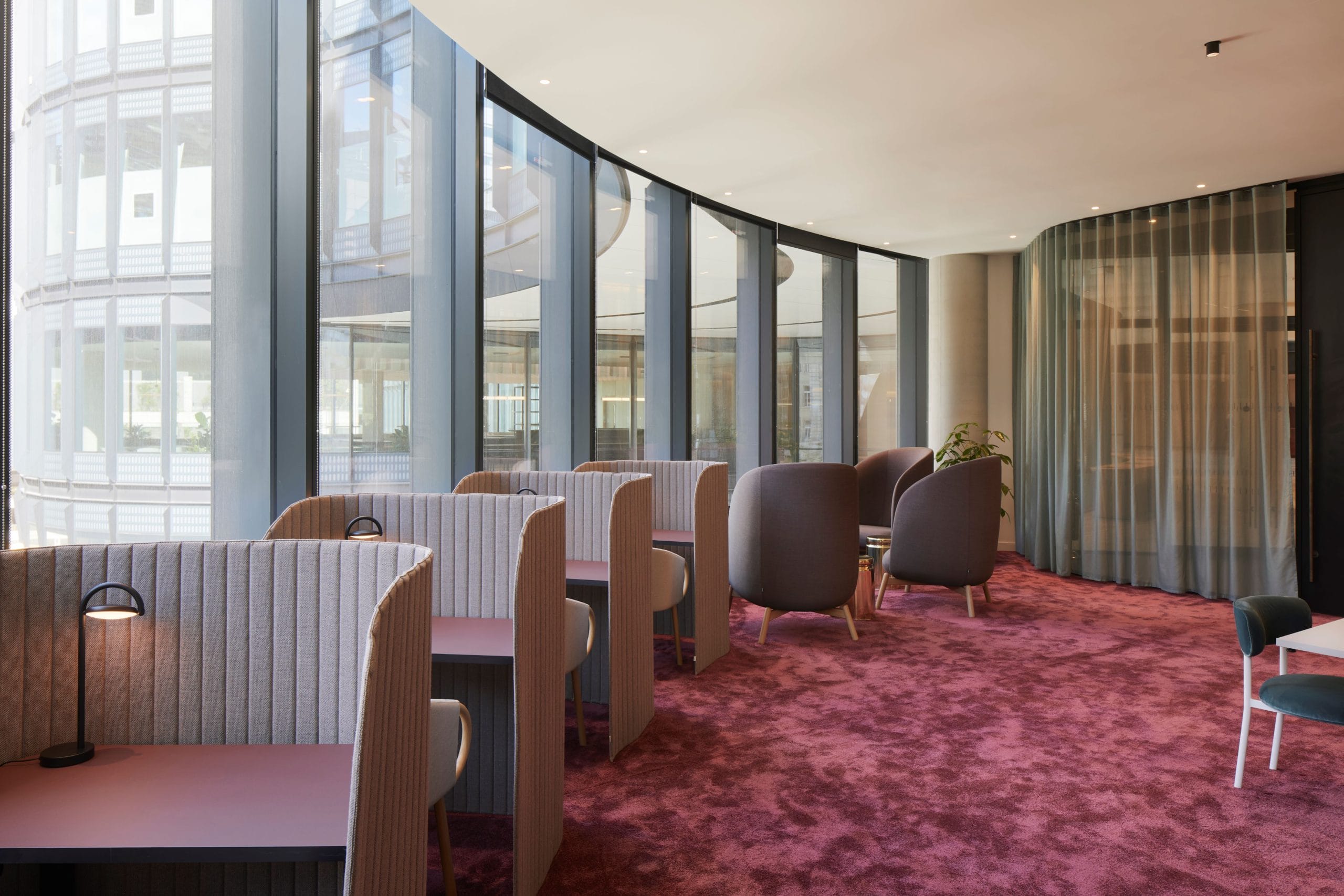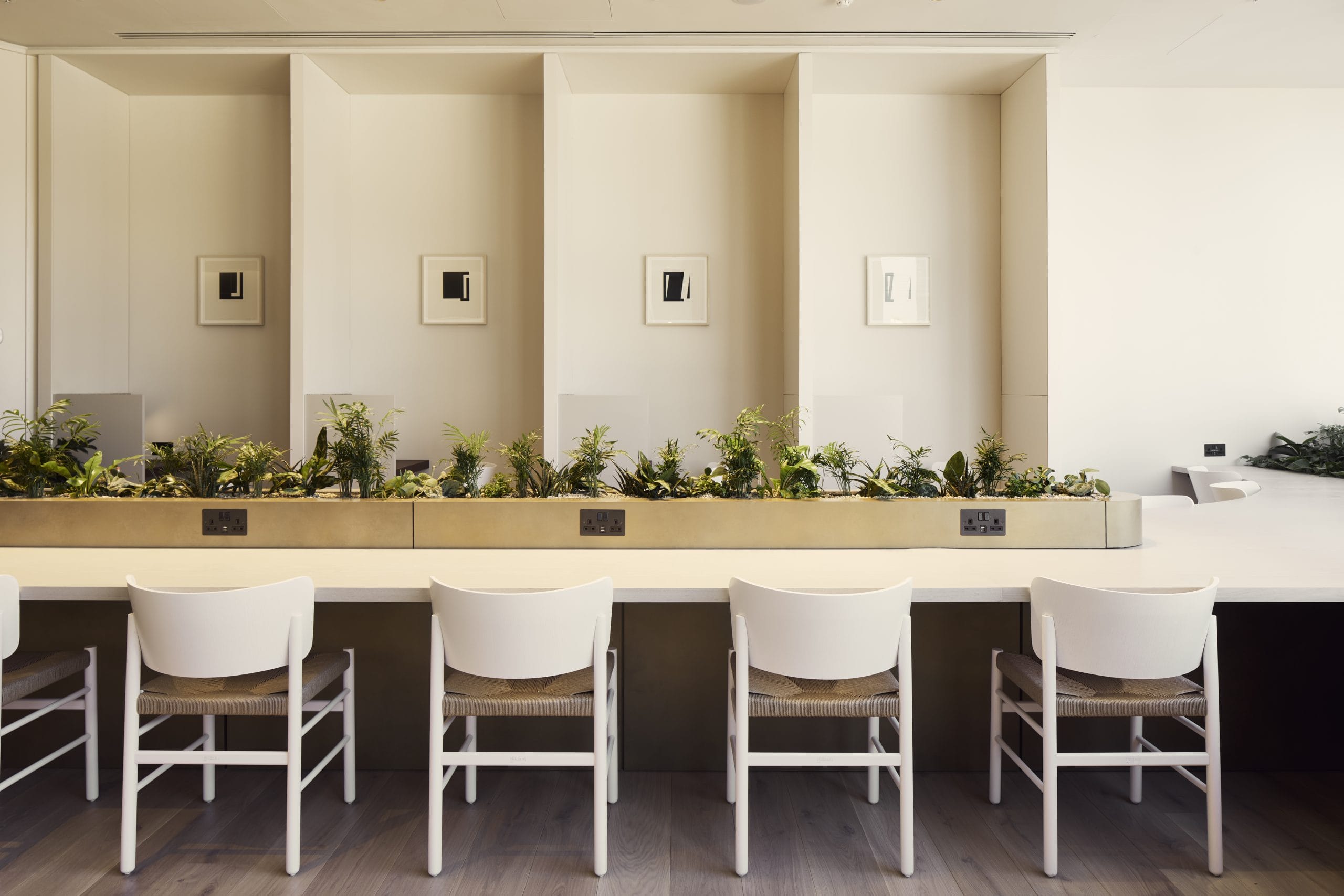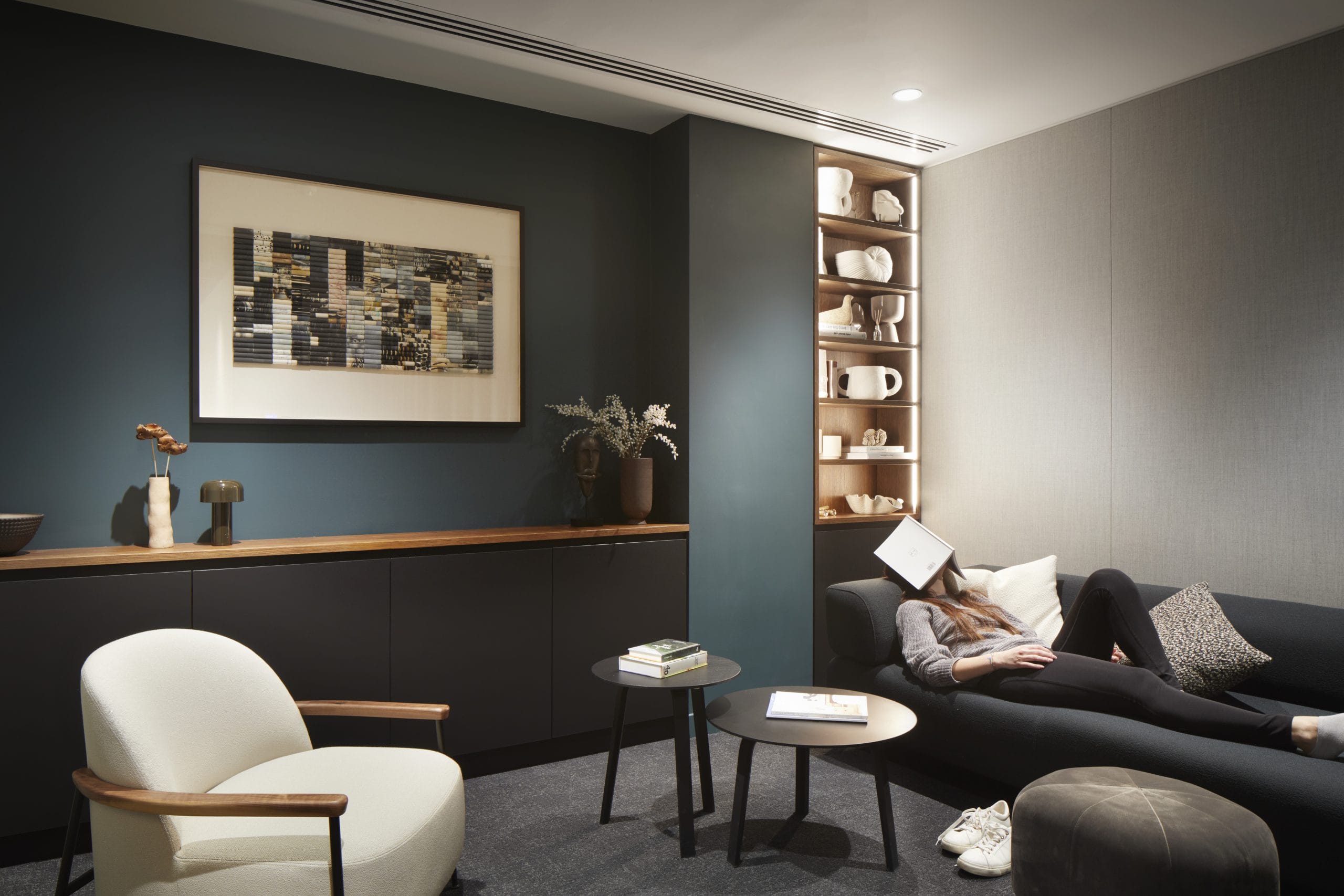

Simple changes such as plants and breakout spaces can make all the difference.
The World Economic Forum highlights that companies with happy and healthy employees are more profitable, reduce revenue and attract and retain talent.
So how can you build and boost a sense of wellbeing in your workspace?
We spoke to Katie Le Chevalier, business development manager at The Planteria Group (which supplies and maintains beautiful and health-supporting plants across the Storey portfolio) to discover how you can maximise wellbeing in a variety of ways – whether that’s embracing the principles of biophilia or adopting work locations which are specifically designed to help your team to thrive.
How do you define wellbeing in the workplace?
It’s all about a company’s culture and a holistic approach. So this would include:
- Physical health – a comfortable environment, supporting physical activity and breaks plus healthy food and drink.
- Mental health – offering resources for stress management and promoting work-life balance.
- Social wellbeing – positive social interaction with breakout spaces, encouraging opportunity for interaction (and taking into account individual preferences, for example, some people who are neurodiverse may be challenged by open-plan spaces so we need to think about them) and fostering a community.
- Career development – supporting employees’ professional development and goals.

What are the things we need to consider to boost wellbeing in every area?
In my role for Planteria who work across the Storey portfolio, I deliver CPD for architects and designers focusing on biophilic design – which is really about all the elements you find in the natural world (light, water, spatial configuration, plants and nature) thinking about:
How does a space look and feel?
What kind of materials are you using eg wood and stone?
What colour palettes are you using?
While also looking at the science behind these things and how they affect humans.
I’m also studying to become a WELL Accredited Professional (WELL AP). [The WELL building certification is an organisation which provides a roadmap for creating and certifying spaces that advance human health and wellbeing – 100 Liverpool Street which is home to Storey has a gold WELL certification]. This provides recommendations for all the elements in a building that affect occupiers such as air, water, nourishment, light, movement, thermal comfort, sound, materials, mind, community and innovation.
How crucial is biophilia to your work…
Biophilia plays a huge role in wellbeing and is the cornerstone of Planteria’s mission.
The concept of biophilia is based on humans’ natural connection to nature; it’s inherent to us and it’s ingrained in our DNA, we’re naturally drawn to green spaces as they’re the places where our ancestors could survive, hunt and gather.
A good example of our connection to nature is that humans love flowers: in nature, flowers indicate forthcoming fruit and a source of nourishment, so it was a positive correlation to remember and the reason why it delights. Also, think how you feel when you’re outside looking at a starry sky or on top of a mountain, that gives us a sense of awe and joy. We seek out these things because they make us feel good and are good for us; it’s a very symbiotic relationship.
What other benefits does nature bring?
It’s been proven that being connected with nature can make us more empathetic to it. Being stuck inside behind screens means we can become disconnected. When we’re in nature, we thrive emotionally, physically and mentally.
During the pandemic, 73% of adults surveyed in a YouGov poll said that connecting with nature had been important in terms of managing their mental health while another study showed that spending time in nature (ideally 120 minutes a week) has a significant impact on overall good health and health improvement. It can also boost calmness and, therefore, our creativity.
What are the practical ways that plants can affect wellbeing?
There was a 2014 study which looked at the affects of plants on a live work environment. It measured productivity before, during and after plants were introduced and, when the plants were placed in the office, the results went up by 15%. People love the aesthetic of plants but they’re also proven to boost creativity, productivity and mood so it’s a win-win situation. Also, in the UK, we spend 90% of our time indoors so it makes sense to bring those natural elements inside. Other mood-boosting elements to consider are light and spatial design.

What other positives do plants bring?
Plants can also be useful for reducing ambient sound – planting across cabinet tops and dividers such as moss walls can soften and break up sound. With people wanting agile working spaces, plant dividers, screening and panels can help to create collaboration and breakout spaces. In our office, we’ve got a plant racking system which is a mix of shelving and plants which is perfect for an informal breakout area for lunch and online calls.
What are the best plants in a workspace?
People tend to have different preferences when it comes to planting. There are lots of options and that is part of the beauty of planting, you can make choices that will suit a variety of different styles. We’d recommend engaging your team in their plant choices while also thinking about easy and cyclical maintenance.
Plant ownership at home is also really good for mental health. For your workspace at home, the peace lily is a good all-rounder while succulents are super easy to look after. The good thing about plants is that they’re low-cost ways of bringing simple joy.
In 2023, British Land hosted Planted across Storey sites which featured a free plant giveaway for all occupiers and events featuring experts explaining the positive impact of biophilia.
What other things should people consider when choosing a workspace?
Proximity to outside spaces and nature are a bonus. We’re lucky in London because there are so many parks giving people places to connect with nature but we also need to encourage pocket parks because it’s important for insects and birds to be able to fly from one area to another. It’s where you get those expanses of concrete that makes it very difficult for nature in a green area to survive.
The greener we can make our cities, the better, the importance of tree canopies and parks can’t be underestimated. (In the past 18 months, Broadgate, Paddington Central and Regent’s Place green spaces have all been redesigned to encourage outdoor seating and biodiversity.) There’s now the biodiversity net gain piece of legislation which ensures that any new project has a measurably positive impact on biodiversity. What’s also great about it is it brings home the importance of protecting nature for us all.
Get in touch for more insight into creating a wellbeing workspace for you at [email protected]